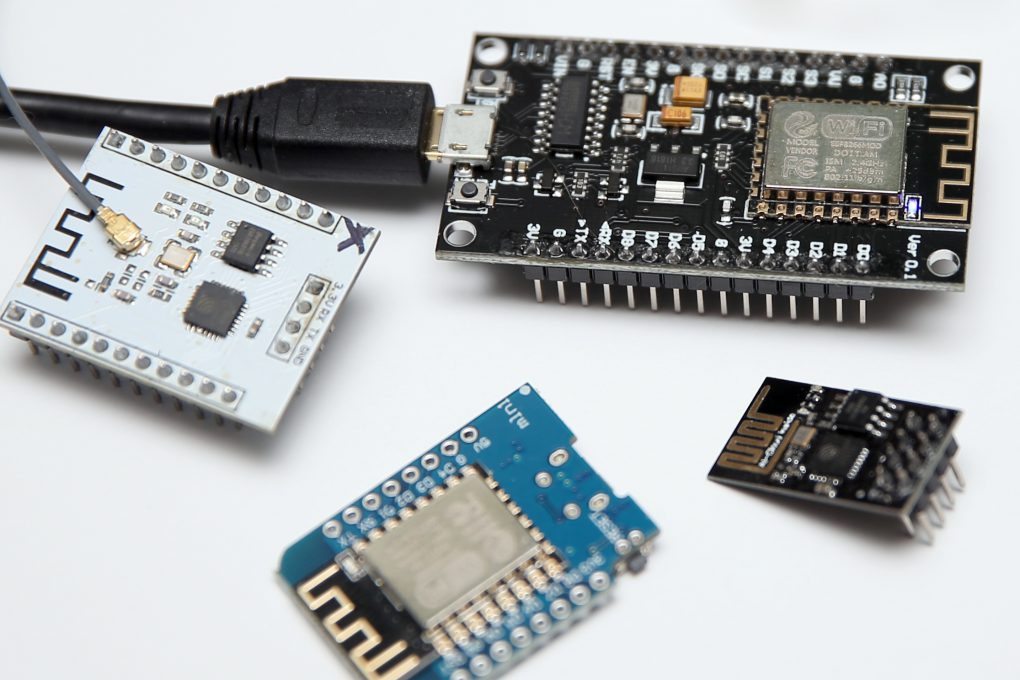ESP8266 + ESPEasy And Why You Need It
Opening up the Arduino libraries and sketching an ESP8266 concept for hours sounds like a lot of fun, and sometimes is, however we have reached an era of IoT where it makes sense to only spend a few minutes as opposed to hours on something when someone else already provided the easy point-and-click roadmap. Enter the ESPEasy firmware and modern ESP8266 architecture.
What is an ESP Chip?
ESP8266 is the general name for what is now a series of ultra low cost WiFi enabled chips that can be used to read or accept bits of data from sensors or controllers. It’s essentially one of the least expensive ways to communicate with hardware over a network.

This chip made its debut a handful of years ago and for the most part its demand was mostly seen by hobby developers and project makers. Up until recently it wasn’t something viable in commercial environments because the code was, and still mostly is, in a field of half supported open source project bits. Users can still fire up the same Arduino utilities they use to communicate with development boards like the Uno, but most of these chips take a considerable amount of tinkering to set up.
A few manufacturers somewhat recently introduced circuit boards with built-in micro USB interfaces which meant no more soldering irons and resistors just to get the ESP boards initially configured. This was a massive improvement.
What is ESPEasy?
ESPEasy is the result of a group effort with the goal to build software for various ESP chips that was not only easy to install, but incredibly intuitive to learn once a chip is fired up. A simple yet powerful web interface, wizards, and diagnostic tools put the $2 chips on the same platform as $300 rivals. This is important.
Why is this important?
I’m a firm believer in the fact that your career doesn’t simply pause in the evening hours. Education is important not only for furthering personal goals, but also in providing new and innovative ways to contribute professionally. Commercial/Industrial use cases for the ESP8266 are difficult to find. Most online tutorials, documentation, and examples of this chipset are limited to entertaining LED projects and simple replacements to home security automation. With the ESPEasy library loaded, users can explore a number of commercial uses applicable to their industry. Physical sensors can be thought of as “apps” and their applicable use extends to manufacturing, logistics, retail, and my other markets.
What can I make?
Sensors are exactly that; They sense things. Take a physical sensor and think of its output in context to a few simple questions:
- Is this number good or bad?
- By logging the data incrementally, what can I learn or look for?
- Is there a way to predict when the number will reach a certain integer?
- What do I want to have happen if the number returns a specific value?
For the most part, that’s all Internet of Things (IoT) is when defining it from the data. A series of IF/THEN arguments based on the output of sensor data. Taking these questions and determining what sensors are capable of reporting the data, ESPEasy can be set up to listen and organize the information in either a set of programmable rules, notifications, or even a JSON output.
There may be multiple ways of approaching the same result. For example, take water levels in a tank. A hydrometer consisting of metalic leads could be used to return an inductive value, or perhaps using a sonic range finder could be used to echo against the top of the water. The trick is to evaluate what would be the most accurate way to measure based on the environment.
The entire exercise here is to take advantage of an easy introduction into IoT development for the purpose of growing skill sets and to discover new ways of introducing useful data to the world. The ESP8266 chips and many types of sensors available are extremely affordable and together can improve a lot of what we interact and depend on, so let’s get building!